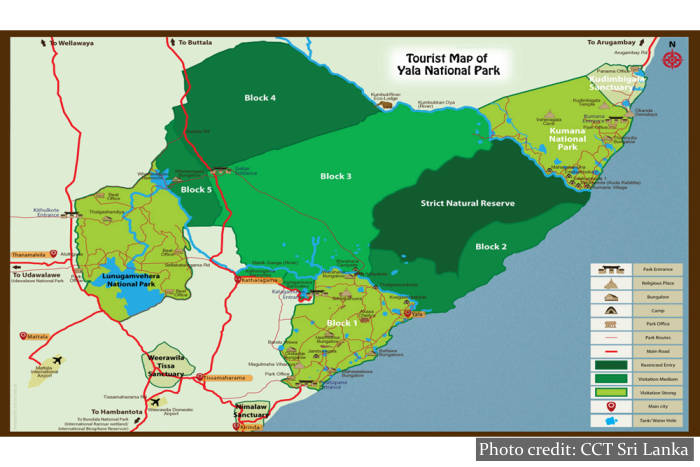
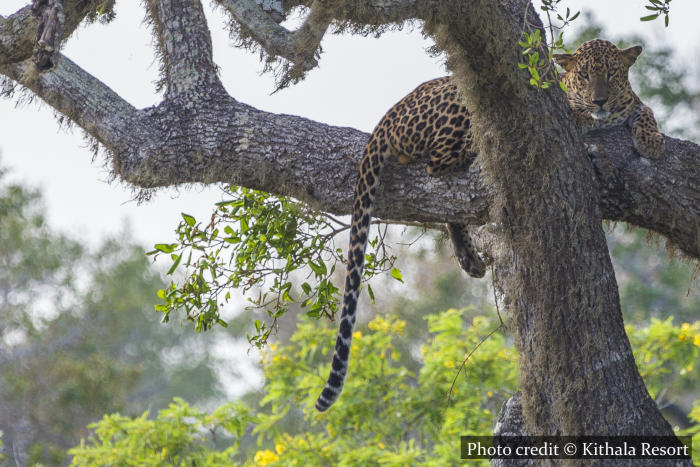
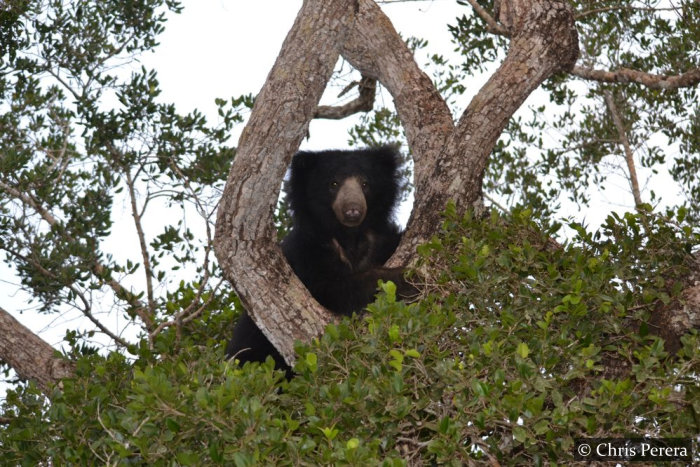
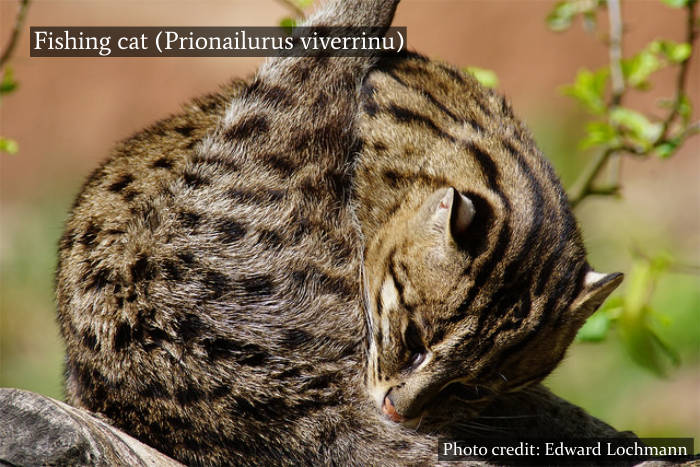
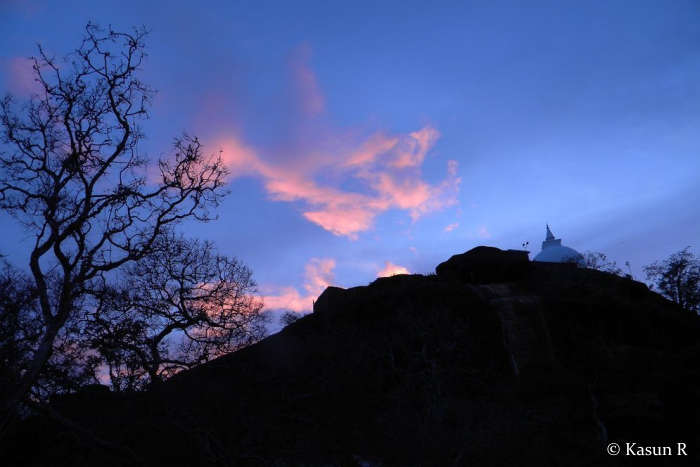
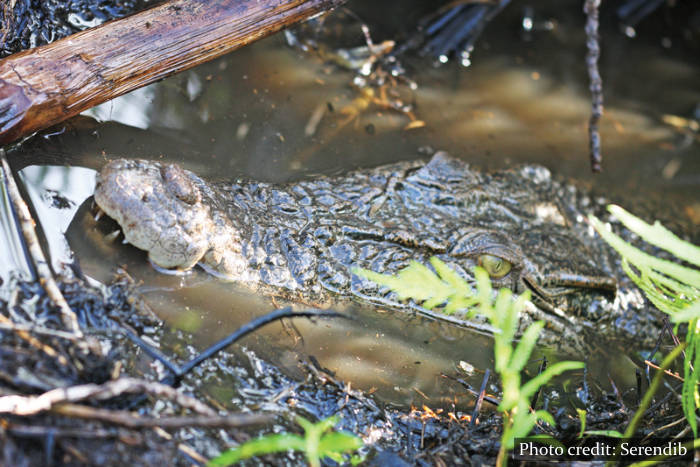
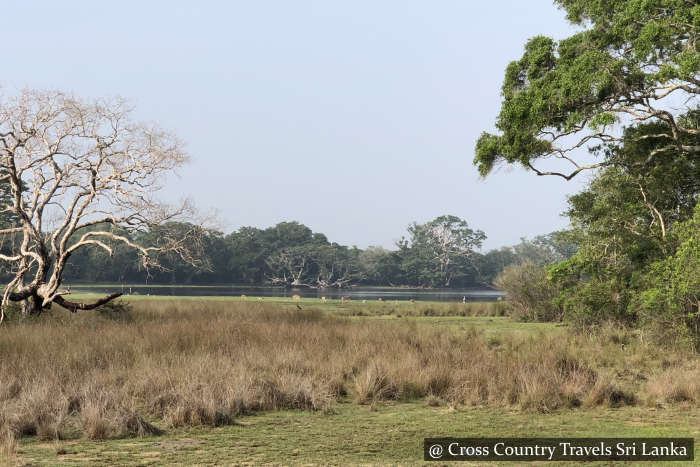
Safari Jeep Share - Yala National Park
Are you near Yala National Park and looking to share a safari jeep? You've come to the perfect place! Our jeep operates sharing safaris in the early morning and again in the afternoon, starting at 2 PM.
For avid animal spotters, this is an excellent option—more eyes mean more sightings! Simply join us by providing the name of your accommodation and your contact details. We’ll reach out the night before to confirm your pick-up, either early in the morning or around 1:30 PM for the afternoon safari.
If you're traveling alone and arriving at Tissa bus station or Katharagama, just let us know so we can arrange timely pick-up.
Tips for Your Visit:
- Early Morning Arrival: To avoid long queues at the entrance, we aim to arrive at the park bright and early.
- Dress Warmly: Mornings can be chilly, so be prepared for the brisk winds.
- Afternoon Visit: Our second safari departs just before 1:30 PM, allowing you to explore the park in the afternoon light.
Prepare for an unforgettable wildlife adventure in Yala National Park! Join us and immerse yourself in the beauty of nature.
Yala National Park

Yala National Park, the second largest park in Sri Lanka after Wilpattu, is also the most visited on the island. Nestled in the southeastern corner, the park is divided into five distinct blocks, with Blocks I and II serving as the main areas open to visitors.
Topographically, the park features flat terrain that gently rises to elevations of 100–125 meters as you move further inland from the coast. Water is plentiful after the northeast monsoon, but during the dry season, surface water can become scarce. The Kumbukkan Oya flows from the northeast, while the Menik River meanders through the southwestern edge, both contributing to the park’s water resources during drier months.
This expansive nature reserve encompasses a rich variety of ecosystems, including moist and dry monsoon forests, semi-deciduous forests, thorn forests, grasslands, marshes, marine wetlands, and pristine sandy beaches. Scattered throughout the park are several lagoons, including Buthuwa Lagoon in Block I, and Pilinnawa, Mahapothana, and Pahalapothana in Block II. The park also features the Maha Seelawa and Uraniya tanks.
Yala is home to an impressive diversity of wildlife, boasting 44 species of mammals and 215 species of birds. Notably, it is renowned for having the highest concentration of wild leopards in the world; however, Wilpattu is recently claiming this distinction.
Please note that due to droughts and the breeding season, the park is typically closed from September 1 to October 15.
Facts Corner 1
Opening Time : 0600 - 1800
Closed during : 1 Sep - 15 Oct (usually)
Entry points :
Gate I - Katagamuwa
Gate II - Palatupana
Entrance tickets - Night visit
Adult - contact us
Child - contact us
Facts Corner 2
Size : 126,786 ha (1,268 sq kms)
Climate : Dry zone
Rainy seasons : Oct - Jan (North-East monsoon)
Average rainfall : 1,000 mm
Average Temperature: 26 °C - 30 °C
Humidity :
Best time to travel : Jun to Sep
Birds of Yala National Park
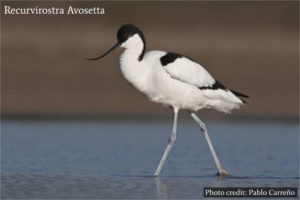
Yala National Park is one of Sri Lanka's 70 Important Bird Areas (IBAs), boasting an impressive diversity of avian life. Within its borders, 215 bird species have been identified, with approximately 90 of them being waterbirds. Notably, around half of these waterbirds are migratory, gracing the park with their presence during specific seasons.
Resident Bird Species:
Among the park’s resident birds, you can spot the striking Black-necked Stork (Ephippiorhynchus asiaticus), the elegant Yellow-wattled Lapwing (Vanellus malabaricus), and the lively Red-wattled Lapwing (Vanellus indicus). Look for the Great Stone Plover (Esacus recurvirostris), the Lesser Whistling Duck (Dendrocygna javanica), and the graceful Indian Shag (Phalacrocorax fuscicollis). The Grey Heron (Ardea cinerea), Black-headed Ibis (Threskiornis melanocephalus), and the Spoonbill (Platalea leucorodia) are also frequent visitors, along with the Openbill (Anastomus oscitans). Other notable residents include the Painted Stork (Mycteria leucocephala), Spotted-billed Pelican (Pelecanus philippensis), Purple Heron (Ardea purpurea), Night Heron (Nycticorax nycticorax), and the vibrant Orange-breasted Green Pigeon (Treron bicincta).
You may also encounter the Barred Buttonquail (Turnix suscitator), the majestic Indian Peafowl (Pavo cristatus), and the Black-winged Stilt (Himantopus himantopus), some of which are migratory. The skies are graced by the Crested Serpent Eagle (Spilornis cheela), the White-bellied Sea Eagle (Haliaeetus leucogaster), and the delightful Blue-tailed Bee-eater (Merops philippinus), which includes migratory visitors.
Migratory Birds:
Among the migratory birds that visit Yala, you might see the Northern Pintail (Anas acuta), the elegant White-winged Tern (Chlidonias leucopterus), and the Eurasian Curlew (Numenius arquata). The Whimbrel (Numenius phaeopus), Black-tailed Godwit (Limosa limosa), and Ruddy Turnstone (Arenaria interpres) are also part of this seasonal spectacle. Greater Flamingos (Phoenicopterus roseus), various Egrets (Ardeidae), and the Oriental Darter (Anhinga melanogaster) add to the park’s allure, along with the Garganey (Anas querquedula), Marsh Sandpiper (Tringa stagnatilis), Lesser Sand Plover (Charadrius mongolus), Indian Paradise Flycatcher (Terpsiphone paradisi paradisi), European Golden Oriole (Oriolus oriolus), and the striking Black Stork (Ciconia nigra).
Endemic Birds:
Yala is also home to several endemic species, including the Ceylon Grey Hornbill (Ocyceros gingalensis), Sri Lanka Junglefowl (Gallus lafayetii), and the Sri Lanka Wood Pigeon (Columba torringtonii). The vibrant Crimson-fronted Barbet or Ceylon Small Barbet (Megalaima rubricapillus), the charming Black-capped Bulbul (Pycnonotus melanicterus), and the Brown-capped Babbler (Pellorneum fuscocapillus) further enrich the park's avian tapestry.
Yala National Park is truly a paradise for birdwatchers, offering an unparalleled opportunity to witness the beauty and diversity of Sri Lanka's birdlife.
Contact CCT Sri Lanka today to arrange specialised tours to observe these remarkable animals in their natural habitat!
Mammals of Yala National Park
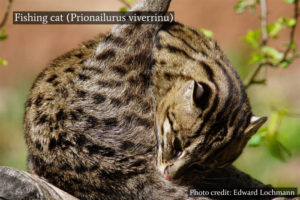
Yala National Park is a haven for wildlife enthusiasts, having recorded an impressive 44 species of mammals, including majestic elephants, elusive leopards, solitary bears, and cunning fishing cats.
Sri Lankan Elephant (Elephas maximus maximus):
The elephant herd at Yala is a remarkable sight, comprising 300–350 individuals. With Sri Lanka's total elephant population estimated between 2,500 and 4,000, the average herd size typically ranges from 12 to 20 members, often led by the oldest female, known as the matriarch. These gentle giants play a vital role in maintaining their ecosystem by creating pathways through dense vegetation, which benefits other species. This magnificent creature is endemic to the island and holds a significant place in Sri Lanka’s natural heritage.
Sri Lankan Leopard (Panthera pardus kotiya):
The Sri Lankan leopard is a solitary and reclusive big cat, revered for its beauty and stealth. As of 2015, Yala is recognized as hosting the highest density of leopards within a single habitat in the world. Notably, the Sri Lankan kotiya is one of the least studied species among the Panthera genus, making it a subject of great interest for researchers and wildlife enthusiasts alike. These elusive cats often hunt at night, using their keen senses to stalk prey. This captivating feline is also endemic to Sri Lanka.
Sloth Bear (Melursus ursinus inornatus):
The sloth bear, known for its unique diet of termites, is the only bear species found on the island. With its shaggy coat and distinctive appearance, this fascinating creature adds to the biodiversity of Yala. Sloth bears are typically nocturnal and are known for their ability to climb trees in search of food.
Endemic Mammals:
Yala is home to several other endemic mammals, including the Toque Macaque (Macaca sinica), which is often seen foraging in groups; the Wild Water Buffalo (Bubalus bubalis), which plays a crucial role in wetland ecosystems; and the Golden Palm Civet (Paradoxurus zeylonensis), known for its nocturnal habits and elusive nature.
Endangered Mammals:
Among the endangered species residing in Yala are the Red Slender Loris (Loris tardigradus), a small, nocturnal primate known for its big eyes and slow movements, and the elusive Fishing Cat (Prionailurus viverrinus), which is adapted to hunting fish and is a vital part of the park’s wetland ecosystem.
Conservation Efforts:
Yala National Park faces challenges such as habitat loss and poaching. Conservation initiatives are in place to protect these species and their habitats, ensuring that future generations can enjoy this incredible biodiversity.
Visitor Experience:
For those looking to enhance their experience, guided tours and wildlife photography opportunities are available throughout the park. Early morning or late afternoon safaris are ideal for spotting these magnificent creatures in their natural habitat.
Cultural Significance:
The animals of Yala also hold cultural significance in Sri Lankan folklore, where they are often seen as symbols of strength and resilience. Yala National Park not only showcases the diversity of Sri Lanka’s wildlife but also emphasises the importance of conservation efforts to protect these remarkable species for future generations. With its rich ecosystems and unique fauna, Yala offers an unforgettable experience for all who visit.
Contact CCT Sri Lanka today to arrange specialised tours to observe these remarkable animals in their natural habitat!
Other species of Yala National Park

Reptiles:
Yala National Park is home to a diverse reptile fauna, with 47 species recorded, six of which are endemic to Sri Lanka. Among these are the Sri Lankan Krait, Boulenger's Keelback, Sri Lankan Flying Snake, Painted-Lip Lizard, Wiegmann's Agama, and Bahir's Fan-Throated Lizard. The park's coastal areas are frequented by all five globally endangered sea turtles, including the majestic Leatherback, Olive Ridley, Loggerhead, Hawksbill, and Green Turtles. Additionally, the park provides habitat for two species of breeding crocodiles: the Mugger Crocodile and the Saltwater Crocodile, both of which add to the rich biodiversity of this unique ecosystem.
Amphibians:
Yala is also a sanctuary for 18 species of amphibians, including the endemic Bufo atukorale and Adenomus kelaartii. These fascinating creatures contribute to the park’s vibrant ecological tapestry.
Fish:
The lagoons of Yala are home to 21 recorded species of freshwater fish. Among the most common are Mozambique Tilapia, Dawkinsia filamentosa, Olive Barb, Pseudetroplus, and the Ceylon Logsucker, each playing a vital role in the aquatic ecosystem.
Invertebrates:
The park is alive with a variety of invertebrate species, including crabs, prawns, and an array of butterflies. Notable among the butterflies are the Common Bluebottle, Common Lime Butterfly, Crimson Rose, Common Jezebel, and Common Mormon, which flutter through the park, adding color and beauty to the landscape.
Yala National Park is not only a refuge for larger mammals but also a treasure trove of reptilian, amphibious, and aquatic life, showcasing the incredible diversity of Sri Lanka’s natural heritage.
Contact CCT Sri Lanka today to arrange specialised tours to observe these remarkable animals in their natural habitat!
Sithulpawwa Temple
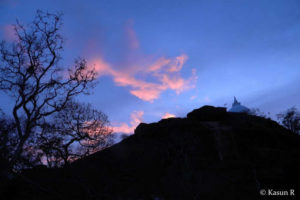
Nestled within the serene expanse of Yala Sanctuary, Sithulpawwa Temple stands as a testament to ancient Buddhist heritage. Constructed by King Kavantissa between 140 and 100 BC, this sacred site is steeped in history and spirituality.
The name "Sithulpawwa" is derived from "Chiththala Pabbatha," meaning "the hill of the quiet mind," reflecting the temple's tranquil ambiance.
Visitors to the temple can explore a rich tapestry of history, including the ruins of Buddha statues, remnants of the ancient monastery, numerous stupas, and intriguing rock inscriptions. A notable highlight is the cave temple adorned with ancient paintings, believed to date back to the 3rd century BC. Atop a rocky mountain, the main stupa offers a breathtaking view of the surrounding landscape.
To reach this remarkable site, you can drive 28 kilometers from Thissamaharama or 17 kilometers from the pilgrimage town of Katharagama, making it a worthy destination for those seeking both spiritual solace and wildlife wonders.
Recent reviews
-
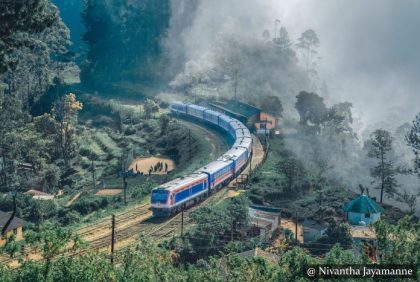 Book Train Tickets Online in Sri Lanka
Rated 5 out of 5by Vedanth Sameer Rao
Book Train Tickets Online in Sri Lanka
Rated 5 out of 5by Vedanth Sameer Rao -
 Whale Watching in Sri Lanka - Shared Luxury Yacht
Rated 5 out of 5by Julie
Whale Watching in Sri Lanka - Shared Luxury Yacht
Rated 5 out of 5by Julie -
 Colombo Port City Charter Sailing - 3 or 5 hrs - For Foreign Guests
Rated 5 out of 5by Sathsarani
Colombo Port City Charter Sailing - 3 or 5 hrs - For Foreign Guests
Rated 5 out of 5by Sathsarani -
 Snorkeling With Whales
Rated 5 out of 5by Arne
Snorkeling With Whales
Rated 5 out of 5by Arne -
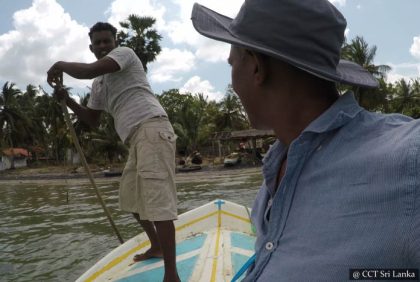 Speedy 10-Minute Boat Ride - Wilpattu to Kalpitiya
Rated 5 out of 5by Ada
Speedy 10-Minute Boat Ride - Wilpattu to Kalpitiya
Rated 5 out of 5by Ada -
 Paramotoring in Sri Lanka - Bentota
Rated 5 out of 5by Kash
Paramotoring in Sri Lanka - Bentota
Rated 5 out of 5by Kash -
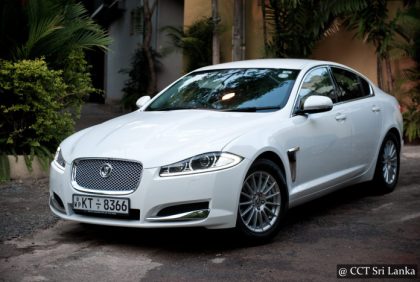 Reserve Your Vehicle With a Driver
Rated 5 out of 5by Steve
Reserve Your Vehicle With a Driver
Rated 5 out of 5by Steve -
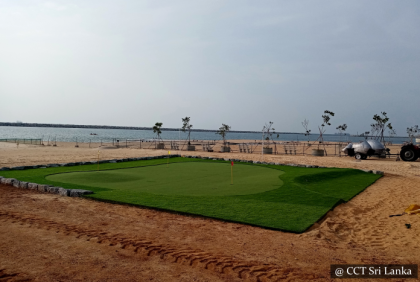 Colombo Port City - Golf Drive Range
Rated 5 out of 5by Chandula Wanasinghe
Colombo Port City - Golf Drive Range
Rated 5 out of 5by Chandula Wanasinghe -
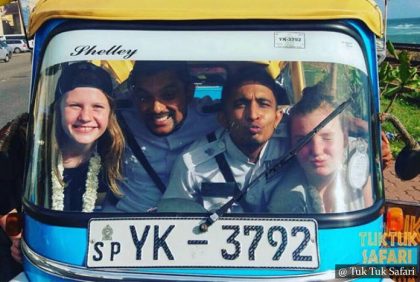 Reserve a Tuk Tuks - Unlimited Kms
Rated 5 out of 5by Thomas Ask
Reserve a Tuk Tuks - Unlimited Kms
Rated 5 out of 5by Thomas Ask -
 Nil Diya Pokuna Caving - For Foreign Visitors
Rated 5 out of 5by Anuj gunasena
Nil Diya Pokuna Caving - For Foreign Visitors
Rated 5 out of 5by Anuj gunasena
Shared safariing in Yala
Best season : Jan - Mar & May - Aug
Available : Daily
Arranging time needed : 1 day
Hottest month : April & May
Best time to start : Early mornings
Starting point : Thissamaharama (Thissa) / Kataragama
Starting time : 5.30 AM and 2 PM
Park entry point : Palatupana, Gate II
Safaring time : 4 hrs
Restrictions : Do not leave plastics behind / Please do not feed wild animals.
Price includes : Safari jeep / Entrance ticket / Breakfast / Trekker (most likely the jeep driver) / First aid kit / All Gov taxes
Child price : Aged 6 - 12 is considered a child / Aged 0 - 6 is free of charge
Optional : A well-spoken local animal expert could be arranged with an additional fee.
You may bring : Cardigan for morning breeze / Hat and sun glass / Sun cream / Camera / Binocular
Feedback us : Our drivers and service providers are advised not to promote any other activities or nudging you for shopping. Please leave your feedback on Google.
We love holiday planning!
Convenient Pick-Up and Drop-Off Options
At CCT Sri Lanka, we prioritise your comfort and convenience with our flexible pick-up and drop-off services. Our team of service-oriented drivers is registered with the Sri Lanka Tourist Board, ensuring you receive the highest standard of professionalism and care.
Our Services Include:
- Airport Pick-Up: Arrive with ease as we provide reliable transportation from Bandaranaike International Airport (BIA) or Palali International Airport (JAF). Start your journey smoothly and stress-free.
- Hotel Pick-Up: Already arrived? We’ll pick you up directly from your hotel or any other location, tailored to your schedule.
- Customizable Drop-Off: Whether you’re returning to the airport or heading to another destination, we’ll arrange a drop-off location that suits your needs.
Let us take care of the logistics while you focus on enjoying your adventure in Sri Lanka. To reserve your vehicle, select your date from the drop-down menu for your destination or contact us directly for personalised assistance. Experience the difference of exceptional service with CCT Sri Lanka.


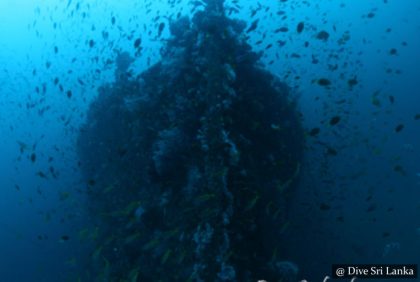
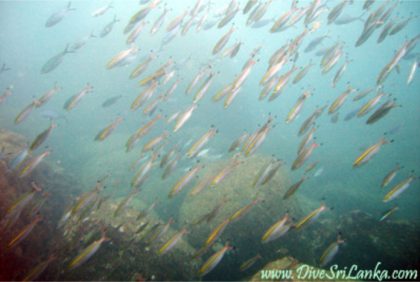

Reviews
There are no reviews yet.